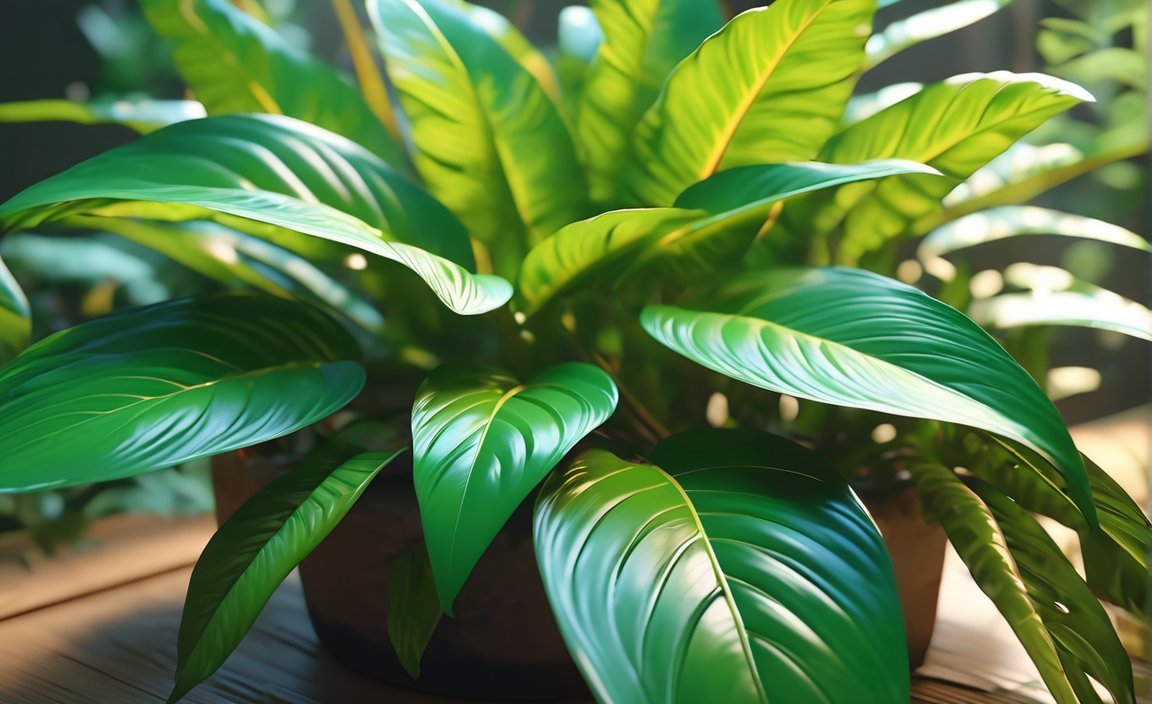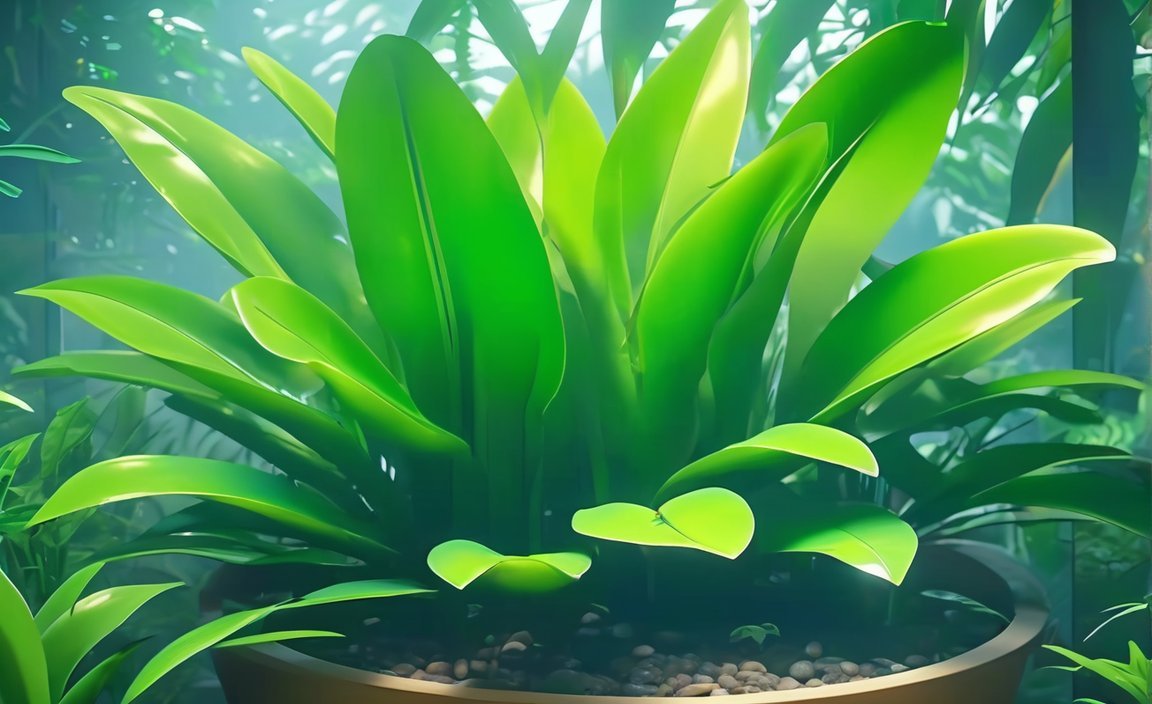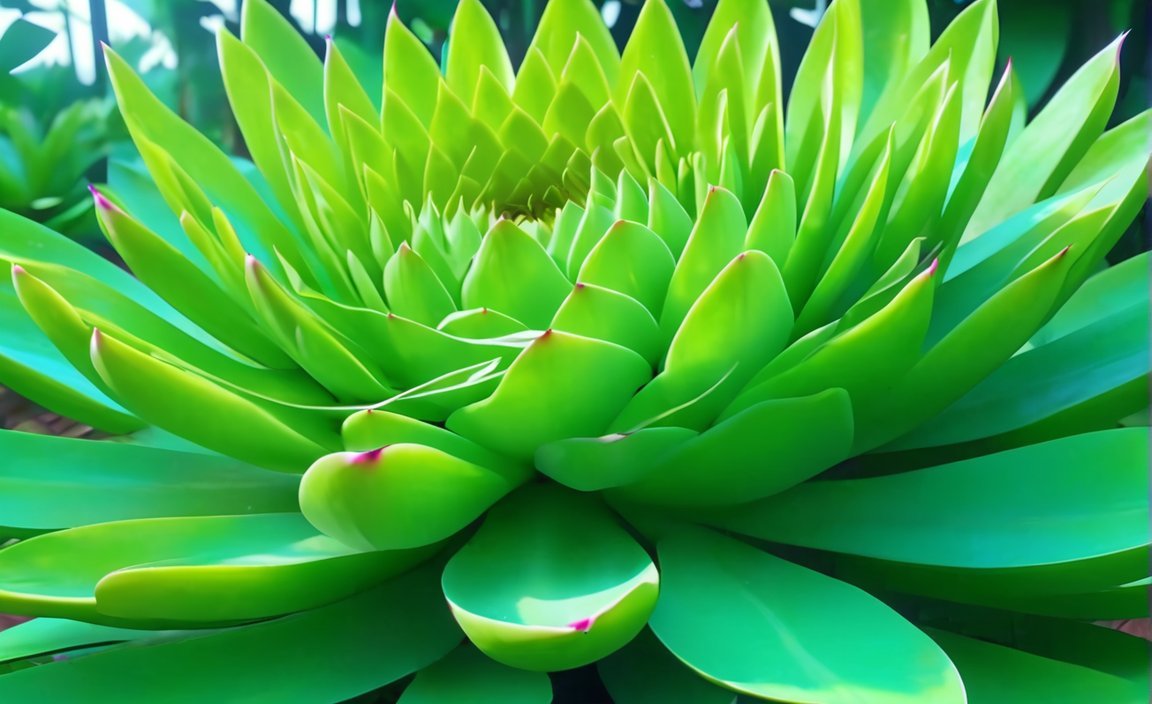Plants, the silent but essential partners in our lives, have been gracing our planet for millennia. They are not merely decorative additions to our homes and landscapes; they are the very foundation of our existence. From the air we breathe to the food we eat, plants play a crucial role in maintaining the delicate balance of our ecosystem.
Beyond their ecological significance, plants also offer a wealth of benefits for our physical and mental well-being. They have the remarkable ability to purify the air we breathe, reduce stress levels, and boost our mood. Studies have shown that spending time around plants can even enhance cognitive function and creativity.
In this comprehensive guide, we will delve into the 10 incredible benefits of plants and explore how they can enrich our lives in countless ways.
1. Plants Improve Air Quality: Our Silent Defenders Against Airborne Pollutants

As we breathe in and out, we are constantly exchanging gases with our environment. Unfortunately, the air we breathe is often laden with pollutants and toxins that can harm our health. These harmful substances can come from a variety of sources, including vehicular emissions, industrial activities, and even household cleaning products. Fortunately, plants can act as our natural air purifiers, removing these harmful substances from the air and releasing fresh oxygen.
A NASA study conducted in the 1980s found that certain houseplants could effectively remove volatile organic compounds (VOCs) from the air. These compounds, often emitted from paints, furniture, and cleaning products, can cause a range of health problems, including headaches, dizziness, and respiratory issues.
Plants as Natural Air Purifiers: Nature’s Way to Cleanse the Air
Plants absorb VOCs through their leaves and roots, where they are broken down into harmless byproducts. This process, known as phytoremediation, is a natural detoxification mechanism that plants have evolved over millennia. Some of the most effective houseplants for air purification include:
- Peace lily (Spathiphyllum): This elegant plant with white flowers is known for its ability to remove benzene, formaldehyde, and trichloroethylene from the air.
- Snake plant (Sansevieria trifasciata): Also known as mother-in-law’s tongue, this hardy plant can tolerate low light conditions and effectively removes formaldehyde, benzene, and trichloroethylene.
- Spider plant (Chlorophytum comosum): This easy-to-care-for plant is a great choice for beginners and can remove formaldehyde, benzene, carbon monoxide, and xylene from the air.
- Pothos (Epipremnum aureum): This versatile vine can be grown in various ways, including as a hanging plant or climbing a trellis. It effectively removes formaldehyde, benzene, toluene, and xylene from the air.
- ZZ plant (Zamioculcas zamiifolia): This low-maintenance plant is known for its tolerance of neglect and can remove benzene, xylene, and toluene from the air.
By incorporating these natural air purifiers into our homes and workplaces, we can create a healthier and more invigorating environment. Plants not only cleanse the air we breathe but also add a touch of greenery and vibrancy to our surroundings, enhancing our well-being in countless ways.
2. Plants Contribute to Mental Health: Nature’s Embrace for a Serene Mind
In today’s fast-paced and demanding world, it is more crucial than ever to prioritize our mental well-being. Amidst the constant hustle and bustle, we often overlook the importance of nurturing our minds and finding moments of tranquility. Spending time in nature has been shown to have a profound impact on our mental health, offering a respite from stress, anxiety, and even depression.
Plants, the silent yet steadfast companions of our natural world, bring nature indoors, providing a calming and restorative presence in our homes and workplaces. Their gentle presence, vibrant colors, and soothing textures have the power to transform our surroundings, creating an oasis of serenity amidst the chaos of modern life.
Studies have demonstrated that simply being around plants can lower blood pressure, reduce cortisol levels, and promote feelings of relaxation and well-being. The presence of plants can evoke a sense of tranquility, calming our minds and easing away the anxieties that often weigh us down.
Plants as Natural Stress Relievers: Cultivating Calm in a Chaotic World
Incorporating plants into our daily routine can be a simple yet effective way to promote mental well-being. Here are some ways to embrace the restorative power of plants:
- Transform your workspace or home office into a haven of tranquility: Surround yourself with plants, creating a workspace that inspires creativity and fosters a sense of calm.
- Invite serenity into your bedroom: Place plants in your bedroom to create a tranquil atmosphere that promotes restful sleep. The gentle presence of plants can lull you into a state of relaxation, preparing your mind and body for a peaceful night’s rest.
- Seek solace in nature’s embrace: Take regular breaks outdoors to immerse yourself in the calming effects of nature. Stroll through a park, wander through a botanical garden, or simply sit beneath a tree and let the sounds of nature wash over you.
- Nurture your mind through plant care activities: Engage in gardening or plant care activities, allowing the act of nurturing life to soothe your own inner self. The rhythmic movements of tending to plants can be meditative, fostering a sense of mindfulness and inner peace.
Plants, with their undeniable ability to enhance our mental well-being, serve as a testament to the profound connection between humans and the natural world. By embracing the presence of plants in our lives, we open ourselves to a world of serenity, tranquility, and renewed vitality.
3. Plants Support Healthy Eating: Nature’s Bounty for a Nourished Body
Plants, the very foundation of our food chain, hold the key to unlocking a healthier and more vibrant life. From the succulent fruits that grace our tables to the hearty vegetables that nourish our bodies, plants provide us with an abundance of essential nutrients that are vital for our well-being.
Fruits, vegetables, nuts, and seeds, all gifts from the plant kingdom, offer a rich tapestry of vitamins, minerals, and phytonutrients that support our physical and mental health. These nutrient-dense powerhouses play a crucial role in maintaining a robust immune system, promoting cellular growth and repair, and protecting us from chronic diseases.
Studies have shown that a diet rich in plant-based foods is associated with a reduced risk of developing chronic diseases such as heart disease, stroke, type 2 diabetes, and certain types of cancer. The fiber found in plant-based foods promotes digestive health, regulates blood sugar levels, and helps us feel satiated, aiding in weight management efforts.
Incorporating Nature’s Bounty into Your Diet: Embracing a Plant-Based Lifestyle
Making conscious choices to incorporate more plant-based foods into our daily lives is a simple yet powerful step towards a healthier and more sustainable way of living. Here are some practical tips to embrace nature’s bounty and reap the benefits of a plant-rich diet:
- Embrace the rainbow of fruits and vegetables: Fill your plate with a colorful array of fruits and vegetables, aiming to consume a variety of colors throughout the day. This diversity ensures you’re getting a wide range of nutrients and antioxidants.
- Make whole grains your go-to choice: Replace refined grains with their whole-grain counterparts. Whole grains provide essential fiber, vitamins, and minerals that are often stripped away in the refining process.
- Include nuts, seeds, and legumes as daily staples: These nutrient-packed powerhouses are excellent sources of protein, fiber, and healthy fats, making them valuable additions to your diet.
- Explore meatless meals or reduce your meat consumption: Experiment with meatless meals or consider reducing your meat intake to one or two servings per week. This shift not only benefits your health but also contributes to environmental sustainability.
By embracing the abundance of plant-based foods that nature has to offer, we can nourish our bodies, enhance our well-being, and contribute to a healthier planet. Let us celebrate the remarkable gifts that plants provide, making conscious choices to incorporate nature’s bounty into our daily lives.
4. Plants Enhance Creativity and Productivity: Nature’s Catalyst for Innovation and Success
In today’s competitive and dynamic world, creativity and productivity are essential qualities for success. However, amidst the hustle and bustle of modern life, these qualities can often be stifled by the monotony of our surroundings and the constant barrage of distractions. Studies have shown that being around plants can have a remarkable impact on our cognitive function, creativity, and problem-solving abilities, transforming our workspaces into hubs of innovation and productivity.
The presence of plants introduces a sense of vibrancy and tranquility into our workspaces, creating an environment that is both inviting and stimulating. Plants act as natural air purifiers, removing harmful toxins from the air and releasing fresh oxygen, which can enhance focus and alertness. Their soothing presence can also help to reduce stress levels and improve mood, fostering a more positive and productive mindset.
Plants for a More Productive Workspace: Cultivating an Oasis of Innovation
By incorporating plants into our workspaces, we can cultivate an environment that promotes creativity, focus, and productivity. Here are some tips for creating a plant-filled workspace that inspires innovation:
- Choose low-maintenance plants: Opt for plants that are easy to care for and can thrive in the specific conditions of your workspace. This will ensure that your plants remain healthy and contribute to a positive work environment.
- Strategically place plants: Position plants in areas where you spend the most time, such as your desk or near meeting areas. Their presence will have a direct impact on your focus and engagement.
- Create a cohesive display: Group plants together to create a visually appealing and impactful display. This will add a touch of nature’s artistry to your workspace.
- Incorporate plants that enhance creativity: Consider adding plants known to boost creativity, such as rosemary, lavender, and peace lilies. Their subtle aromas can stimulate the mind and promote innovative thinking.
By embracing the transformative power of plants in our workspaces, we can create environments that foster creativity, enhance productivity, and pave the way for success. Let nature’s inspiration guide us as we transform our workspaces into oases of innovation, where ideas flourish and productivity thrives.
5. Plants Provide Natural Beauty and Enhance Interior Design: Nature’s Artistic Touch in Living Spaces
Plants, with their inherent beauty and versatility, possess an undeniable ability to transform any space, adding a touch of natural elegance that elevates interior design. Their presence can soften harsh lines, introduce vibrant colors and textures, and infuse a sense of tranquility into any room.
From the graceful arches of climbing vines to the lush foliage of cascading ferns, plants bring the artistry of nature indoors, creating a harmonious blend of the natural and human-made worlds. Their diverse forms and textures add visual interest, breaking up monotony and creating a sense of depth and dimension in interior spaces.
Plants play a crucial role in softening harsh architectural lines, adding a touch of organic fluidity to the rigid structures that often dominate our homes and workplaces. Their presence can temper the starkness of straight lines and geometric shapes, creating a more inviting and visually appealing environment.
The vibrant colors of plants, ranging from the deep greens and earthy browns to the vibrant hues of blooming flowers, serve as a palette for interior designers, adding splashes of life and energy to any room. These natural accents can complement or contrast with existing décor, creating a cohesive and aesthetically pleasing design scheme.
Plants as Living Artworks: Nature’s Masterpieces in Our Homes
Incorporating plants into interior design is not merely about aesthetics; it is about embracing the restorative power of nature and creating spaces that nurture our well-being. Plants can transform our homes into sanctuaries of tranquility, providing a respite from the stresses of daily life.
Here are some tips for using plants to enhance your interior design:
- Consider the scale of the space: Choose plants that are appropriately sized for the room, avoiding overwhelming small spaces with large plants or creating a sense of emptiness in large rooms with diminutive plants.
- Group plants for impact: Arrange plants in groupings to create a more impactful display. Clustering plants with similar foliage or contrasting colors can add visual interest and enhance the overall aesthetic.
- Utilize plants to define spaces: Use plants to subtly divide areas within a room, creating a sense of separation without the need for physical partitions. This can be particularly useful in open-plan living spaces.
- Incorporate plants into architectural features: Leverage ledges, shelves, and niches to showcase plants, transforming these architectural elements into eye-catching displays.
- Choose plants that complement your décor: Select plants with foliage and flower colors that harmonize with your existing décor, creating a cohesive and aesthetically pleasing design.
By embracing the beauty and versatility of plants, we can transform our living spaces into sanctuaries of natural elegance, where art and nature intertwine to create a harmonious and restorative environment. Let us invite nature’s artistry into our homes, allowing plants to elevate our interior design and enhance our well-being.
6. Plants Improve Indoor Humidity: Nature’s Remedy for Dry Air

As we increasingly spend more time indoors, particularly in modern, tightly sealed buildings, maintaining a healthy indoor environment becomes increasingly crucial. Dry air, often a byproduct of indoor heating and air conditioning systems, can wreak havoc on our health, causing respiratory issues, dry skin, and irritated eyes.
Plants, with their remarkable ability to regulate moisture levels in the air, emerge as nature’s remedy for dry air. Through the process of transpiration, plants release moisture into the air through their leaves, acting as natural humidifiers. This gentle mist not only increases humidity levels but also helps to remove airborne pollutants, creating a healthier and more comfortable indoor environment.
Plants as Natural Humidifiers: Restoring Balance to Your Indoor Environment
Incorporating plants into your home or office can significantly improve indoor humidity levels and combat the negative effects of dry air. Here are some of the best houseplants known for their exceptional humidifying abilities:
- Boston fern (Nephrolepis exaltata): This lush, cascading fern is a renowned humidifier, releasing moisture at an impressive rate. Its graceful fronds add a touch of elegance to any room.
- Peace lily (Spathiphyllum): This elegant plant with delicate white flowers is both beautiful and effective in increasing humidity. Its tolerance for low light conditions makes it a versatile choice for various indoor spaces.
- Spider plant (Chlorophytum comosum): This easy-to-care-for plant is a popular choice for beginners and experienced plant enthusiasts alike. Its long, trailing vines and numerous spiderettes add a touch of greenery and enhance humidity levels.
- ZZ plant (Zamioculcas zamiifolia): This low-maintenance plant thrives in neglect, making it an ideal choice for those with busy lifestyles. Its glossy, dark green leaves add a touch of sophistication to any décor while effectively humidifying the air.
- Areca palm (Dypsis lutescens): This tropical beauty brings a touch of the exotic indoors, with its slender palm fronds reaching impressive heights. It is a powerful humidifier, capable of releasing significant moisture into the air.
By incorporating these natural humidifiers into your home or office, you can create a healthier and more comfortable indoor environment, alleviating the negative effects of dry air and promoting overall well-being. Let plants be your allies in creating a haven of tranquility and rejuvenation within your own four walls.
7. Plants Help to Reduce Noise Pollution: Nature’s Mufflers in a Noisy World**
In today’s bustling cities and industrialized communities, noise pollution has become an increasingly pervasive issue, often reaching levels that can negatively impact our health and well-being. The constant cacophony of traffic, construction, and machinery can lead to a range of adverse effects, including stress, anxiety, sleep disturbances, and even hearing loss.
Amidst this din, plants emerge as nature’s mufflers, offering a soothing respite from the relentless noise that permeates our modern lives. Their leaves and stems, with their intricate structures and textures, act as natural sound barriers, absorbing and diffusing sound waves, effectively reducing noise levels and creating a more tranquil environment.
Plants as Natural Sound Barriers: Cultivating Quiet Sanctuaries
Incorporating plants into our homes and offices can significantly reduce noise pollution, creating a haven of serenity amidst the chaos of the outside world. Here are some of the most effective houseplants for mitigating noise pollution:
- Rubber plant (Ficus elastica): This robust plant with large, glossy leaves is known for its exceptional sound-absorbing abilities. Its sturdy stature and vibrant foliage make it a striking addition to any space.
- Snake plant (Sansevieria trifasciata): This hardy plant, also known as mother-in-law’s tongue, is renowned for its tolerance of low light conditions and its ability to thrive with minimal care. Its upright, sword-like leaves effectively absorb sound waves, creating a sense of tranquility.
- Fiddle-leaf fig (Ficus lyrata): With its large, violin-shaped leaves, the fiddle-leaf fig not only adds a touch of sophistication to any décor but also excels at absorbing sound. Its sculptural form and lush foliage create a visually appealing and acoustically pleasing addition to any room.
- Peace lily (Spathiphyllum): This elegant plant with delicate white flowers is a popular choice for its air-purifying and humidifying properties. It also possesses excellent sound-absorbing qualities, contributing to a peaceful and serene atmosphere.
- Pothos (Epipremnum aureum): This versatile and easy-to-care-for plant is known for its trailing vines and heart-shaped leaves. It effectively absorbs sound waves, making it a valuable addition to homes and offices seeking a quieter environment.
By embracing the noise-reducing capabilities of plants, we can transform our living spaces and workplaces into sanctuaries of tranquility, where the soothing sounds of nature replace the cacophony of modern life. Let plants be our allies in creating a haven of peace and serenity, where we can escape the relentless noise and rediscover the tranquility that nature has to offer.
8. Plants Can Prevent Soil Erosion: Nature’s Defense Against Land Degradation
Soil erosion, the insidious stripping away of fertile topsoil, poses a significant threat to our environment, leading to a cascade of detrimental consequences. As the lifeblood of our planet’s ecosystems, soil erosion not only impoverishes land but also contributes to water pollution, loss of biodiversity, and desertification.
Plants, with their intricate root systems and unwavering resilience, emerge as nature’s unwavering defense against soil erosion. Their roots, like delicate yet powerful anchors, burrow deep into the earth, binding soil particles together and forming an impenetrable barrier against the relentless forces of wind and water.
Plants as Natural Anchors: Safeguarding Soil against Erosion’s Wrath
Trees, with their towering stature and deep-reaching roots, stand as formidable guardians of the soil. Their roots, extending far beyond the visible trunk, form an extensive network that grips the soil, preventing it from being swept away by the elements. The sheer depth and strength of these roots, penetrating meters below the surface, provide an unwavering anchor against the erosive forces of nature.
Beyond trees, other plant life plays a crucial role in safeguarding soil against erosion. Shrubs, with their dense root systems and ability to thrive in diverse environments, effectively anchor the soil, particularly on slopes and hillsides. Grasses, with their interwoven root mats, form a protective cover, preventing soil particles from being dislodged and carried away. Groundcovers, carpeting the earth with their lush foliage, suppress soil erosion by absorbing rainwater and reducing wind velocity.
Harnessing Nature’s Defense: Protecting Our Land and Future
By embracing the soil-protecting power of plants, we can mitigate the devastating effects of soil erosion and safeguard the integrity of our ecosystems. Planting trees, shrubs, grasses, and groundcovers in areas susceptible to erosion creates a natural defense system, preventing topsoil from being lost to the wind and water.
Incorporating vegetation into agricultural practices, such as cover cropping and contour farming, further enhances soil conservation efforts. These techniques harness the protective power of plants to minimize soil erosion, preserving the fertile land that sustains our food production.
As we recognize the profound role that plants play in preventing soil erosion, we embark on a path towards a more sustainable future. By nurturing and protecting these natural guardians of the soil, we safeguard the land that sustains us, ensuring a healthier and more resilient planet for generations to come.
9. Plants Promote Biodiversity: Nature’s Tapestry of Life
Biodiversity, the intricate tapestry of life on Earth, is not merely a collection of species but the very foundation of a healthy and resilient planet. It is the intricate web of interconnectedness that sustains ecosystems, provides essential resources, and fuels the evolutionary engine that drives innovation and adaptation.
Plants, the cornerstone of biodiversity, stand as the primary producers, capturing the sun’s energy and transforming it into the nourishment that sustains all living things. Their leaves, like solar panels, harness the sun’s power, converting it into organic compounds that form the basis of the food chain.
Through this process of photosynthesis, plants not only provide food for herbivores but also indirectly nourish carnivores, decomposers, and countless other organisms that depend on the food chain’s intricate web of relationships. Plants, in their silent and unassuming way, support the very existence of life on Earth.
Plants as Pillars of Ecosystems: Nurturing the Web of Life
Beyond their role as primary producers, plants play a pivotal role in maintaining healthy ecosystems, providing essential habitat and shelter for a myriad of species. Their leaves, branches, and roots create a haven for insects, birds, mammals, and countless other organisms, providing them with nesting sites, protective cover, and a rich source of food.
Plants, through their intricate root systems, anchor the soil, preventing erosion and preserving the fertile land that sustains life. They regulate water flow, absorbing rainwater and preventing it from rushing away, replenishing groundwater reserves and sustaining the delicate balance of ecosystems.
Plants, with their remarkable ability to cycle nutrients, ensure the continuous flow of essential elements that nourish all living things. They absorb nutrients from the soil and release them back into the environment through their decaying leaves and branches, allowing these vital elements to be reused by other organisms in an endless cycle of renewal.
Planting for Biodiversity: Nurturing Life in Our Own Backyards
We, as stewards of the planet, have the responsibility to nurture and protect biodiversity, ensuring the continued health and resilience of our ecosystems. Planting native plants in our backyards, communities, and public spaces is a simple yet powerful step towards fostering biodiversity.
Native plants, adapted to the specific climate and soil conditions of our local regions, provide the ideal food and shelter for native wildlife. They are the cornerstones of local ecosystems, supporting a diverse array of species and contributing to the delicate balance of nature.
By replacing non-native plants with their native counterparts, we restore the natural habitats that support a myriad of species. We create corridors for wildlife movement, providing pathways for pollination, seed dispersal, and the interconnectedness that sustains life.
As we nurture biodiversity in our own backyards and communities, we sow the seeds of a healthier, more resilient planet. We create havens for wildlife, restore the balance of ecosystems, and safeguard the intricate web of life that sustains us all. Let us embrace our role as guardians of biodiversity, ensuring that the tapestry of life continues to thrive for generations to come.
10. Plants Contribute to Scientific Research: Nature’s Laboratory for Unparalleled Innovation
Plants, the enduring and resilient lifeforms that grace our planet, have long been recognized for their profound contributions to the advancement of scientific knowledge. From the dawn of civilization, humanity has turned to the natural world, seeking remedies for ailments and unlocking the secrets of life. Plants, with their intricate chemical compositions and remarkable adaptations, have proven to be an invaluable source of inspiration and a treasure trove of potential therapeutic solutions.
Plants as Nature’s Pharmacy: Unveiling Medicinal Treasures
Plants have been the foundation of traditional medicine for millennia, providing a rich arsenal of natural remedies that have alleviated suffering and prolonged lives. The bark of the cinchona tree, a native to the Andean forests, yielded quinine, a drug that revolutionized the treatment of malaria, saving countless lives from this devastating disease.
The opium poppy, with its delicate petals and hypnotic properties, gave rise to morphine, a powerful pain reliever that continues to be a cornerstone of palliative care. The digitalis plant, with its heart-shaped leaves and ancient medicinal lineage, provided digoxin, a drug that has transformed the management of heart failure, offering hope to those battling this debilitating condition.
Plants as Pioneers of Scientific Discovery: Unveiling Nature’s Secrets
The role of plants in scientific research extends far beyond their medicinal applications. Plants serve as invaluable models for understanding fundamental biological processes, such as photosynthesis, respiration, and cell division. They provide insights into the intricate web of interactions that sustain ecosystems and the delicate balance between organisms and their environment.
In the realm of agriculture, plants have been at the forefront of genetic engineering and crop improvement, leading to the development of high-yielding, disease-resistant varieties that nourish a growing global population. Plants are also playing a crucial role in environmental science, providing solutions for air and water purification, bioremediation of contaminated sites, and the development of sustainable energy sources.
The Future of Plant-Based Science: Unveiling Endless Possibilities
As we continue to delve deeper into the molecular and genetic mysteries of plants, we can anticipate an even more profound integration of plant-based science into our lives. Researchers are constantly screening new species for potential therapeutic properties, harnessing advanced techniques to extract and synthesize plant-derived compounds, and exploring the vast potential of plant-based vaccines.
The future of plant-based science holds immense promise for addressing global challenges, such as combating antibiotic-resistant infections, developing treatments for neurodegenerative diseases, and creating sustainable agricultural practices that protect our planet’s resources. Plants, with their untapped potential and inherent resilience, stand ready to guide us towards a healthier, more sustainable future.
Let us continue to cherish the remarkable contributions of plants to scientific research, recognizing their role as nature’s pharmacy, pioneers of scientific discovery, and beacons of hope for a brighter future. As we unlock the secrets of these extraordinary lifeforms, we embark on a journey of endless possibilities, where the boundaries of science and medicine intertwine with the boundless wisdom of nature.
- Discover the remarkable 10 benefits of farming and how it can transform your agricultural endeavors.
- Uncover the incredible 10 benefits of plants to humans and learn how they enhance our lives in numerous ways.
FAQ
Q1: In what ways do plants contribute to mental health?
A1: Plants can have a profound impact on our mental well-being. Studies have shown that spending time around plants can reduce stress levels, anxiety, and depression. Plants can also boost our mood, improve cognitive function, and enhance creativity.
Q2: How do plants improve indoor air quality?
A2: Plants act as natural air purifiers by absorbing harmful pollutants and toxins from the air. They release fresh oxygen, which helps to improve air circulation and reduce the concentration of carbon dioxide. Some of the most effective houseplants for air purification include peace lilies, snake plants, spider plants, pothos, and ZZ plants.
Q3: What are some examples of plants that can be used to prevent soil erosion?
A3: Plants play a crucial role in preventing soil erosion by anchoring the soil with their roots. Their roots help to bind the soil particles together, preventing them from being washed away by wind and water. Some of the most effective plants for preventing soil erosion include trees, shrubs, grasses, and groundcovers.
Q4: What are some of the nutritional benefits of plants?
A4: Plants are an essential source of nutrients for humans. They provide us with vitamins, minerals, fiber, and other essential compounds that are vital for our health. A diet rich in plant-based foods has been linked to a reduced risk of chronic diseases such as heart disease, stroke, type 2 diabetes, and certain types of cancer.
Q5: How can we incorporate more plants into our daily lives?
A5: There are many ways to incorporate more plants into our daily lives. We can add plants to our homes and workplaces, eat a plant-based diet, and spend time outdoors in nature. Even small changes can make a big difference. For example, adding a few houseplants to your home can improve indoor air quality and boost your mood.
- Star Ring Trends: Etsy vs Amazon - March 28, 2025
- Boost Pollinator Habitats: Baby Blue Eyes Sustainable Farming Guide - March 28, 2025
- Protect Big Black Bears: Effective Conservation Strategies - March 28, 2025
















